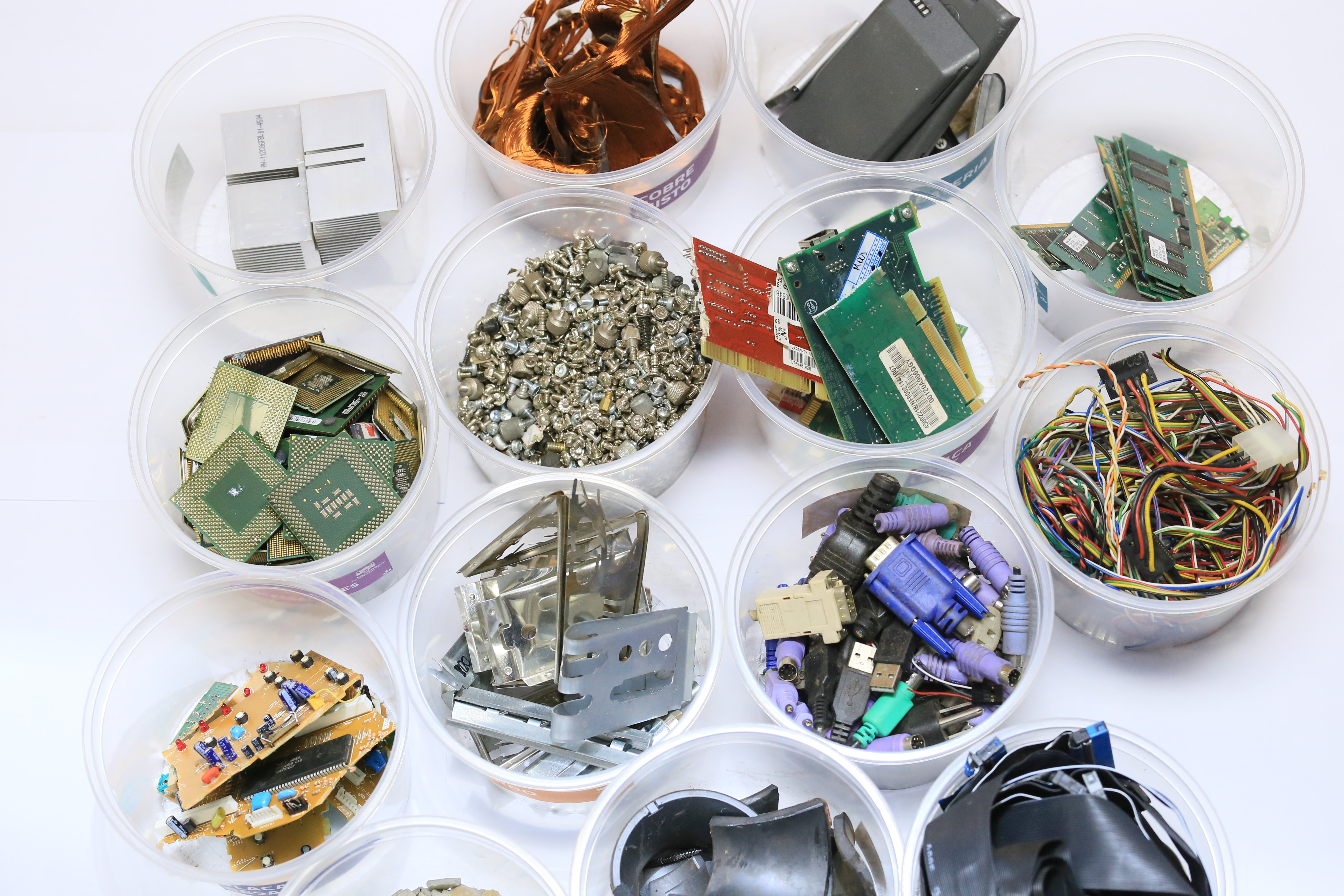Are digital technologies carbon footprint neutral or not?

Source: Metarreciclagem station valparaizo i, valparaíso de goiás go, brasil+
This week is the COP26, the 2021 United Nations climate change conference. For nearly three decades the UN has been bringing together almost every country on earth for global climate summits – called COPs (‘Conference of the Parties’). As known, the commitments laid out in Paris did not come close to limiting global warming to 1.5 degrees, and the window for achieving this is closing (see #DontChooseExtinction campaign).
During the pandemic digital technologies allowed us to save endless hours of transportation, commuting, for work, shopping or leisure. This post explores whether digital technologies are carbon footprint neutral or not? What is important to know and what actions can be taken?
1.Environmental impact during the Production of Digital Technologies
A whole decade: The Guardian published last month that "building a new smartphone – and specifically, mining the rare materials inside them – accounts for 85% to 95% of the device’s total CO2 emissions for two years. That means (...) buying one new phone takes as much energy as recharging and operating a smartphone for an entire decade”. Le Monde Diplomatic explains the large number of natural resources needed to produce a mobile phone (infographic in French and Spanish), which can be complemented by the Global Climate Tech Landscape.
2.Environmental impact on the Procurement of Digital Technologies
Greenwashing vs Transparency: User devices, networks, and data centers are the three main parts of the Information and Communication Technologies (ICT) sector. When purchasing digital technologies, it is important to make clear that the footprint matters. For instance, prioritizing digital devices and services from companies that are working to reduce their carbon footprint. Most ICT companies are claiming their environmental commitment (e.g. Apple, Amazon, or Microsoft). However, governments raise their concern about “greenwashing”, claiming that more clarity on the current energy efficiency plans and transformation towards renewable/low carbon electricity supply is needed. A good practice can be to demand a carbon transparency label that denotes the carbon emissions that the ICT product causes over its full lifecycle (see the case of Logitech). Further orientation can be found in Science-Based Target of 1.5-degree (i.e. GSMA Guidance) or Corporate Digital Responsibility.
3.Environmental Impact when Using Digital Technologies
Direct vs Indirect Emissions: Calculating carbon footprints demands a sufficient understanding of the technology itself to give accurate results. Ericsson notes the difference between Direct carbon emissions associated with ICT manufacturing, use, and disposal (ICT’s carbon footprint) and Indirect positive or negative emission effects from using ICT (e.g., travel substitution and transportation optimization or E-readers footprint can be lower than paper books if used many times).
“...the carbon footprint of training a single big language model [for AI] is equal to around 300,000 kg of carbon dioxide emissions. This is of the order of 125 round-trip flights between New York and Beijing, a quantification that laypersons can visualize” (Nature, 2020).
However, there are different perspectives depending on the institution. While the World Economic Forum argues that “digital technologies could help reduce global carbon emissions by up to 15%”, the British Royal Society adds, “estimate that digital technologies contribute between 1.4% to 5.9% of global greenhouse gas emissions". Scientists from Lancaster University concluded that these emissions could double by 2025 (BBC). Lately, there has been debate on the carbon impact of video streaming. Again, opinions are divided, while some are sounding the alarm, others think there is no reason for concern. The bottom-line is all digital companies will need to reduce their carbon footprint, adds Wired.
4.Recycling of Digital Technologies
e-waste (electronic refuse) contains several toxic additives or hazardous substances. No one really knows how much e-waste is generated every year, but recent estimate a record 53.6 million tonnes of e-waste produced globally. This is equivalent to the weight of 350 cruise ships, enough to form a line 125 km long (ITU). These numbers are expected to grow according to the Global E-waste Monitor 2020.
5+1 good recycling practices (from Harvard and others):
i) Re-evaluate: Ask yourself, do you really need that extra gadget?
ii) Extend the life: Keep your device safe and avoid overcharging the battery.
iii) Buy refurbished: Refurbished products reduce the environmental impact of hardware purchases.
iv) Buy environmentally friendly electronics: Look for products labeled Energy Star or certified by the Electronic Product Environmental Assessment Tool (EPEAT).
v) Create e-waste recycling programs: Ensure that all e-waste is sent to an appropriate recycling facility.
*) Support better e-waste legislation: endorse proper recycling, disposal of electronic equipment and circular economy action plan and policies to reduce electronic and electrical waste (e.g. India, EU, US or ITU).
5.Raising Digital Awareness
“Without data you're just a person with an opinion” (Edwards Deming): Think digitally. Digital technologies offer significant opportunities to improve efficiency, reduce congestion, air pollution, etc. However today digital technologies are not Net Zero Carbon. Better metrics and more capacity building is needed. It is important that individuals, societies, and governments are mindful of the existing digital footprint. Increasing awareness in this field can be a game-changer. Think about how you can help. It is time to monitor our emissions. Share this information with others and “START. Accept that change is inevitable...”
… Two recommended resources:
a) Sustainable Web Manifesto: “If the Internet was a country, it would be the 7th largest polluter”
https://www.sustainablewebmanifesto.com
b) Infographic: The Internet's Carbon Footprint https://www.climatecare.org/resources/news/infographic-carbon-footprint-internet/

Posted in futuro, innovación, Research on Oct 29, 2021




